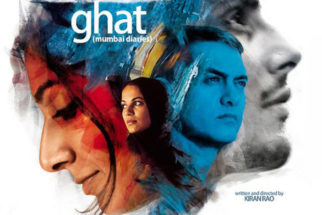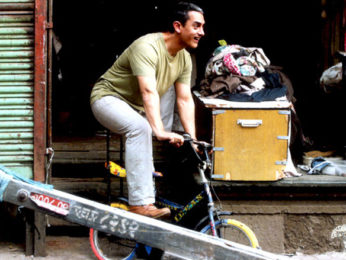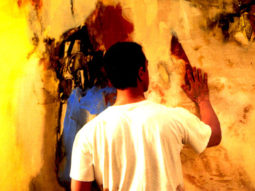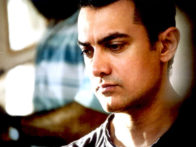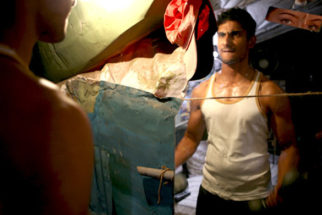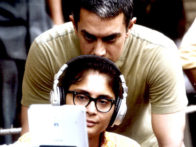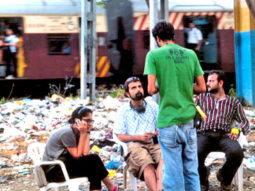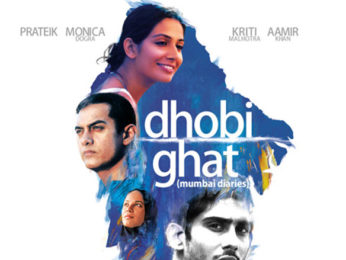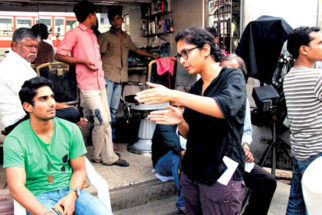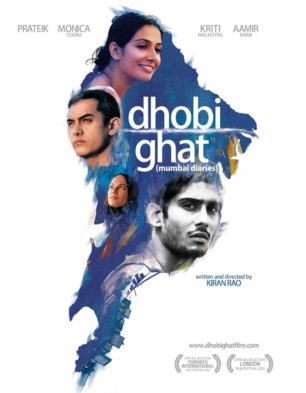Awash with international acclaim so to speak, director Kiran Rao's debut with 'Dhobi Ghat' showcases Bombay and four of its interconnected characters in all its splendour, vivaciousness and calm. The story traveled various production houses until it reached that of her husband, Aamir Khan, the methodical actor. So does it turn out to be that revolutionary journey of Indian Cinema's maturity in film making and is it the coming of age tale for Bollywood with its delicately weaved, character-focused plot?
Hardly.
The premise is simple enough to reveal. Four different characters, interlinked at some point, pass through their routines with undecided feelings. In the backdrop, is the city of Bombay; with its trains, slums, maids, families, flamboyance, aspirations, fast changing culture, celebrations, dark alleys, rats, monsoon and dhobi ghat.
Through Yasmin's (Kriti Malhotra) video capturing of Bombay and its hard workers, we experience its essence. It serves as a great tour for those who have not seen the city, namely her brother for whom she is recording such detail. She, on the other hand, has her own troubles in married life too but we don't see the evidence. Shai (Monica Dogra) is a journalist based in USA who has come for some freshness and relaxation in a city like Bombay. (Good luck with that!). At an art exhibition, she meets the artist Arun (Aamir Khan) with whom she has an awkward time. Arun had apparently moved into Yasmine's abandoned home where he discovered some of her belongings including those guided tours of Bombay.
Munna (Prateik Babbar) is perhaps the central character of the film. He is a dhobi by profession with a secret identity by night. He services many homes including those of Shai and Arun, therefore, he is a story teller and directory for people who seek addresses of others. Through him, we discover a little about Arun's past and how some high society housewives in the city are just weird. Shai befriends her dhobi, Munna in an attempt to capture dhobi ghat and parts of the city on her camera. In exchange, she does a photo shoot for him and frequently drives away in her car after their 'outing', leaving him in the downpour at night.
The film is not just about the way these characters feel about each other. Its about whether or not, you want to bother interpreting their moods and actions to arrive at that conclusion. Do we know enough about Yasmin to really care about her married life? Do we know Arun's past and present to care about his future or what's going on in his mind that produces abstract art on canvas? Shai may look pretty but do we applaud her ambivalence and incredulous innocence? What about the shady Munna who can be in his client's bedroom at one point, meet gangster film producers at another, neglect circumstances over his feelings for a woman and perform his secretive operations by night time?
Are we able to connect with these characters deep enough in this 'character-driven' story to arrive at a discovery or conclusion that enables us to draw parallels, elevate ourselves, understand or simply..... appreciate?
Dhobi Ghat's narrative is shallow. In an attempt to go unconventional, the movie lacks drama where it was required and as a result, everything and everyone feels cold. Maybe that was the point or was it?
It lacks the change, twist, revelation or journey that we anticipated in the end that would make more sense of all the interconnectedness of its characters. Instead, simplicity is the motive here. Arun's life seems like that of any other artist, except for his discovery which did not alter his universe. In the true spirit of Bombay, he moved on. Shai's innocent friendship with Munna and random act with Arun doesn't come as a surprise for someone living with Bombay's diversity. Munna's lifestyle, barring a couple of random incidents, is not out of the ordinary scheme of things either.
Sometimes, simplicity works as an underkill, as does melodrama when it works as an overkill. Do you want an example of where one strikes a balance for a scene like 'suicide'? That would be Joy Lobo hanging from the ceiling fan in his dorm room in '3 Idiots'. No melodrama, no background music, no close-ups and definitely, not simplistic.
Kiran Rao attempts to enrich us with her attention to detail. The beauty of the monsoon with the acoustic guitar strung distinctly in the background, Arun's refined apartment in the middle of Bombay's older communities, Shai's photography of various characters in the city, Yasmine's innocence and POV camera work and even the attitude of the maids working in their homes have been depicted in a realistic and articulate manner.
Only through the video camera of Yasmin and still camera of Shai, do we experience the richest part of this film; the scenes and happenings of Bombay. The cinematography in these aspects is excellent.
Prateik Babbar was the highlight of the film's performances. His expressions were credible and he possesses a rawness for his character that makes him likeable. Monica Dogra looks beautiful in most scenes and has performed well as the NRI journalist on a sabbatical with her ambivalence, however fallacious, being confidently carried out by her. Kriti Malhotra is almost like the narrator of the film as Yasmin. She plays with innocence and a new-comer's excitement in many scenes that made her portrayal quite credible. But any other actor too could've played Arun's role. For Aamir Khan, this was hardly a challenge. Without the need for any research into an artist's distinctive habits, lifestyle and expressions, Aamir easily portrayed his shallow character that almost made it look like he did it for Kiran's sake. (Better not be the case since he does need to recover the few lakhs that went into production!)
Dhobi Ghat is not a revolution in cinema. It is a decent attempt at art-house cinema with an A-grade actor which will not appeal to masses but might do to the classes for whom, a different opinion (positive in this case) will be the only enrichment they achieve. This, ladies and gentlemen, is merely a critical opinion of such opinionated persons.
We are already seeing many films that are focusing more on the story as well as characters with some brilliant cinematography, music and performances – Udaan, Raajneeti, Paa, Gulaal etc. but one cannot sell yellow American corn along Mahabaleshwar lake as 'local flavor'. It has to be white.
So, should we look forward to Kiran Rao's next film? Perhaps.... and should we look forward to Aamir Khan in it as his solo performance for that year? NOPE.
6.89 on a scale of 1-10.

